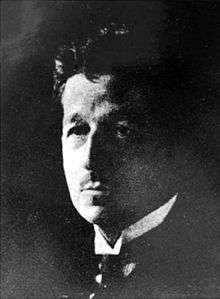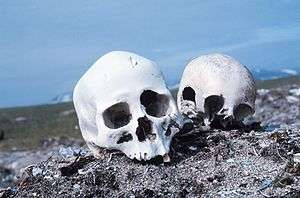Edmond Locard
| Edmond Locard | |
|---|---|
 | |
| Born |
13 December 1877 Saint-Chamond, Loire, France |
| Died |
4 May 1966 (aged 88) Lyon, France |
| Residence | Lyon, France |
| Nationality | French |
| Citizenship | French |
| Known for | First police laboratory, Locard's exchange principle, Sherlock Holmes of France |
| Scientific career | |
| Fields | Forensic science, Public health |
| Influences | Alexandre Lacassagne |
| Influenced | Georges Simenon |
| Part of a series on |
| Forensic science |
|---|
 |
|
Dr. Edmond Locard (13 December 1877 – 4 April 1966)[1] was a French criminologist, the pioneer in forensic science who became known as the "Sherlock Holmes of France". He formulated the basic principle of forensic science: "Every contact leaves a trace". This became known as Locard's exchange principle.
Biography
Locard studied medicine and law at Lyon, France, eventually becoming the assistant of Alexandre Lacassagne, a criminologist and professor. He held this post until 1910, when he began the foundation of his criminal laboratory. At one point, Locard met with Sir Arthur Conan Doyle while the latter was visiting France.
In 1910, Locard succeeded in persuading the Police Department of Lyon to give him two attic rooms and two assistants, to start what became the first police laboratory. [2]
He produced a monumental, seven-volume work, Traité de Criminalistique. He continued with his research until his death in 1966.
In November 2012, he is nominated to the French Forensic Science Hall of Fame of the Association Québécoise de Criminalistique [3]
Legacy
- The young Georges Simenon, later to become a well-known detective writer, is known to have attended some Locard lectures in 1919 or 1920.
Locard is considered to be the father of modern forensic science. His Exchange Principle is the basis of all forensic work.
References
- ↑ "Page of Alexandre Arnould Edmond LOCARD". Geneanet.
- ↑ O'Connor, Tom. "An introduction to criminal justice". Megalinks in criminal justice. Austin Peay State University. Archived from the original on 24 August 2010. Retrieved 17 September 2015.
- ↑ "Liste des intronises au Pantheon francophone de la criminalistique". Association Québécoise de Criminalistique. Retrieved 2015-06-23.
Further reading
- Erzinclioglu, Zakariah (2004). Illustrated Guide+ to Forensics: True Crime Scene Investigations. Carlton. ISBN 978-1422354544.
- Kirk, Paul Leland (2008). Crime investigation: physical evidence and the police laboratory. Interscience.